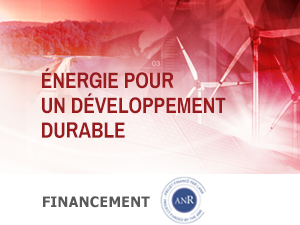Fatigue, i.e. the failure of mechanical structures under cycling loading, remains a considerable technological challenge as it occurs unexpectedly whenthe structure is operating apparently in a safe and steady state regime, without externalsigns of mechanical deterioration. Even if lifetime and safety prediction methodologiesbased on the non-destructive monitoring of mechanical properties have been proposed,the early detection and monitoring of fatigue crack growth remains a crucial issue.
Wehave recently reported in metallic materials, the discovery of acoustic emissions (AE)specific to fatigue crack growth. These so called acoustic multiplets are characterized bynearly identical waveforms, and are repeatedly triggered over many successive loadingcycles at the same stress level and originate from a single localized source. They mark theslow, incremental propagation of a fatigue crack at each cycle, or the rubbing along itsfaces. Being specific to fatigue cracking, they can be used as early warnings of crackpropagation, which will ultimately lead to structural failure. Based on this proof ofconcept, the e-WARNINGS project aims to expand this study with the following objectives:i) to understand the origin of these multiplets and identify the physical processes involved,for different materials, under different loading conditions. ii) to develop new AE sourcemodels by analyzing the detected signals in connection with mechanical events. Ultra-highspeed full displacement field measurements and advanced numerical fracture simulationswill be used to finally improve the AE signal analysis. iii) to propose a new, reliable non-destructive on-line monitoring of the onset of fatigue cracking based on machine learningalgorithms during mechanical tests or within structures in-service. To achieve these goals,the methodology developed in the e-WARNINGS project relies on the use of these AEmultiplets as a specific signature of fatigue cracks. This will be validated and furtherbroaden to different materials. Additional improvements in the analysis of multiplets areproposed, guided by the investigation of the ideal situation of a single crack propagationevent. To validate the numerical source model and improve the robustness of the AEanalysis algorithms, we will use various experimental setups with increasing complexity,towards more realistic situations. This will be of benefit to the on-line detection of thecrack propagation using multiplets in industrial applications, overcoming the limitations ofexisting methods that require a lot of manual and periodic investigations. The e-WARNINGS project, by extending the application field of cutting-edge seismologicalanalyses to material science, is innovative by nature. The specific detection of theseacoustic multiplets in materials, will allow to obtain a new way to detect, monitor andmeasure fatigue crack extension in-situ and in-operando with non-destructive techniques.This will be possible by using state-of-the-art technologies enabling novel ultra-high speedfull-field measurements and the development of new AE source models. The newmonitoring method and the dedicated detection/monitoring algorithm proposed in the e-WARNINGS project will enable the identification of cracks and underlying failure risks withunprecedented sensitivity and specificity, well before any unstable propagation occurs.This will (i) lead to a standalone solution providing genuine early warnings with a reliableon-line detection and monitoring of fatigue cracking within structures in-service, (ii) openthe way towards an optimization of the damage tolerance concept, hence (iii) improve thesafety of installations and prevent industrial risks.


